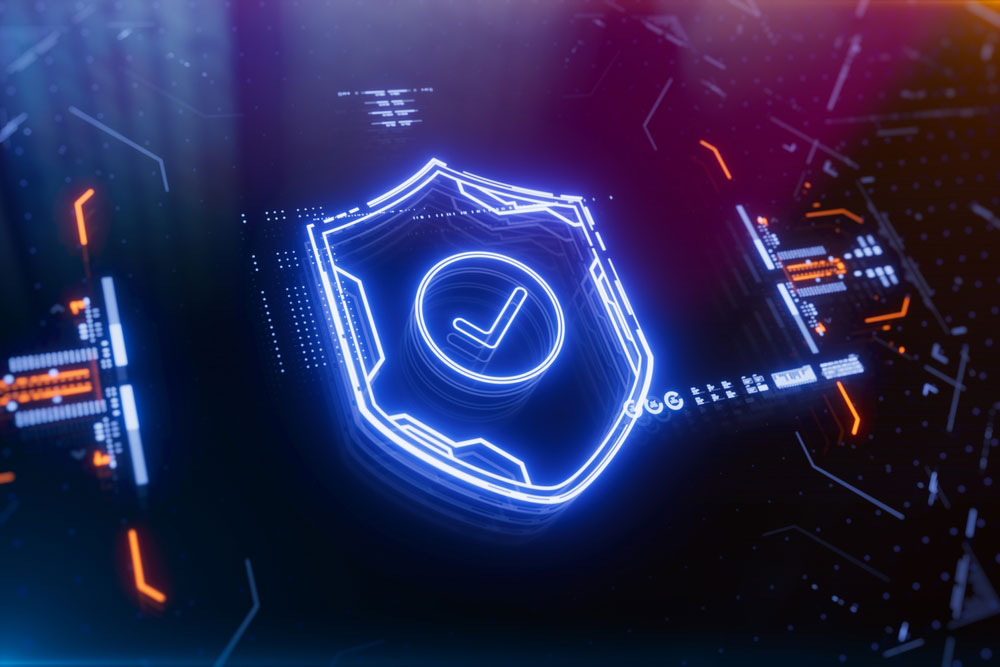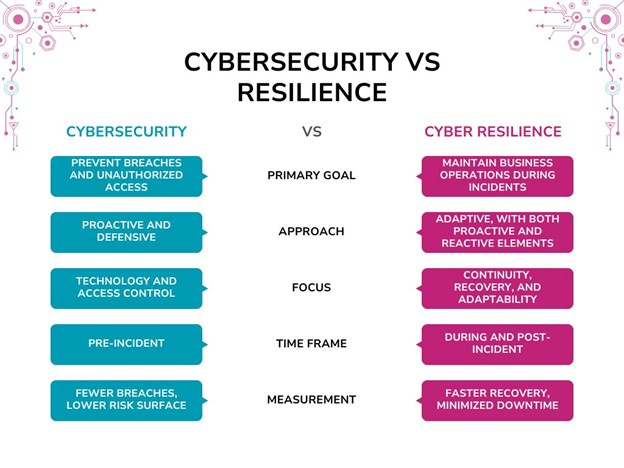
Cybersecurity is your first line of defense. It includes the tools, technologies, and practices designed to protect networks, devices, applications, and data from unauthorized access, attacks, or damage.
Below are the fundamental areas that form an effective cybersecurity program. Each plays a specific role in reducing exposure to threats and strengthening your organization’s security posture.
Strong security is about protection and control. When your systems are well defended, threats become manageable events, not business-defining crises, and your organization stays in command of its own operations and reputation.
Cyber resilience assumes that no system is impenetrable and aims to ensure sustained operations even during an attack and minimize disruption if one occurs.
Cyber resilience goes beyond traditional defense and keeps your business functional when systems are under pressure. These core capabilities support continuity and recovery, so that when a disruption happens, your organization experiences uninterrupted operations.
Resilience is about being ready for the risk, not avoiding it. With the right systems and planning, even serious incidents become manageable, not catastrophic. That is how organizations protect operations, maintain trust, and recover stronger.

Let’s explore the key differences that shape how each contributes to your organization’s overall security and operational steadiness. While they both play essential roles, their focus, timing, and measurement criteria vary significantly.
Relying solely on cybersecurity is no longer enough in a more digitally focused world. Even the most advanced defenses can be breached, which is why cyber resilience is also essential. A resilient organization is prepared to respond effectively when a breach occurs, ensuring minimal disruption to its operations.
For a comprehensive and effective approach, organizations must integrate cybersecurity and cyber resilience throughout their operations. Here are some quick tips from Depth Security on how to build this integrated strategy:
Cybersecurity prevents attacks, but cyber resilience ensures your organization stays operational when the unexpected occurs. Together, they create a comprehensive defense and recovery strategy that safeguards both your operations and reputation.
Is your organization prepared to handle both prevention and recovery? Contact Depth Security today to learn how we can help you build a resilient, secure infrastructure for long-term success.